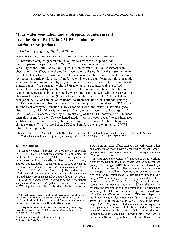摘要
Seventeen coupled general circulation models from the Coupled Model Intercomparison Project Phase 5 (CMIP5) are analyzed to assess the dynamics and variability of the North Pacific Subtropical Countercurrent (STCC). Consistent with observations, the STCC is anchored by mode water to the north. For the present climate, the STCC tends to be stronger in models than in observations because of too strong a low potential vorticity signature of mode water. There are significant variations in mode water simulation among models, i.e., in volume and core layer density. The northeast slanted bands of sea surface height (SSH) anomalies associated with the STCC variability are caused by variability in mode water among models and the Hawaii islands are represented in some models, where the island-induced wind curls drive the Hawaiian Lee Countercurrent (HLCC) located to the south of STCC. Projected future changes in STCC and mode water under the Representative Concentration Pathways (RCP) 4.5 scenario are also investigated. By combining the historical and RCP 4.5 runs, an empirical orthogonal function analysis for SSH over the central subtropical gyre (160 degrees E-140 degrees W, 15 degrees-30 degrees N) is performed. The dominant mode of SSH change in 17 CMIP5 models is characterized by the weakening of the STCC because of the reduced formation of mode water. The weakened mode water is closely related to the increased stratification of the upper ocean, the latter being one of the most robust changes as climate warms. Thus the weakened STCC and mode water are common to CMIP5 future climate projections. Citation: Xu, L., S.-P. Xie, and Q. Liu (2012), Mode water ventilation and subtropical countercurrent over the North Pacific in CMIP5 simulations and future projections, J. Geophys. Res., 117, C12009, doi:10.1029/2012JC008377.
- 出版日期2012-12-12
- 单位中国海洋大学
